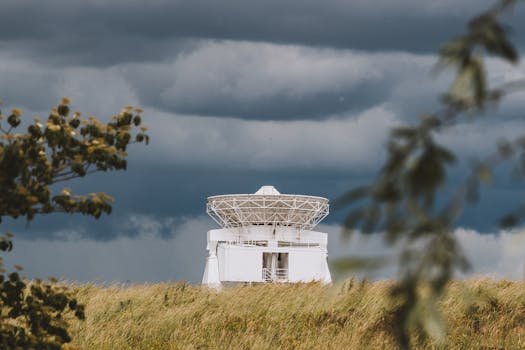
GEO satellites, or Geostationary Earth Orbit satellites, are a type of satellite that orbits the Earth at an altitude of approximately 36,000 kilometers, remaining stationary relative to a fixed point on the equator. GEO satellites have been a cornerstone of modern communication and navigation systems, providing a wide range of services that are essential to our daily lives.
One of the primary applications of GEO satellites is in the field of global communication. These satellites are used to transmit television signals, providing entertainment and information to millions of people around the world. They are also used for telecommunications, enabling phone calls, internet connectivity, and other data transmission services. Additionally, GEO satellites play a critical role in navigation systems, such as GPS, which rely on a network of satellites to provide location information and timing signals.
In addition to their role in communication and navigation, GEO satellites are also used for weather forecasting and environmental monitoring. These satellites are equipped with sophisticated sensors that can detect changes in the Earth’s atmosphere and oceans, providing valuable data for meteorologists and climate scientists. Furthermore, GEO satellites are used for Earth observation, allowing scientists to study the planet’s surface and monitor natural disasters such as hurricanes, wildfires, and floods.
History of GEO Satellites
The concept of GEO satellites was first proposed by science fiction writer Arthur C. Clarke in 1945. However, it wasn’t until the 1960s that the first GEO satellite, Syncom 2, was launched into space. Since then, hundreds of GEO satellites have been launched, with many more planned for the future. Today, GEO satellites are a vital part of modern communication and navigation systems, providing essential services to people around the world.
The development of GEO satellites has not been without its challenges. One of the main difficulties is the high cost of launching a satellite into geostationary orbit. Additionally, the harsh conditions of space, such as extreme temperatures and radiation, can cause damage to satellite components. Nevertheless, the benefits of GEO satellites far outweigh the costs, and they continue to play a critical role in our daily lives.
Applications of GEO Satellites
GEO satellites have a wide range of applications, from television broadcasting to navigation and weather forecasting. They are also used for telecommunications, providing internet connectivity and phone services to remote and underserved areas. Furthermore, GEO satellites are used for Earth observation, allowing scientists to study the planet’s surface and monitor natural disasters.
In addition to their practical applications, GEO satellites also have the potential to drive economic growth and development. By providing access to communication and navigation services, GEO satellites can help to stimulate economic activity in remote and underserved areas. They can also help to improve healthcare and education outcomes, by providing access to medical and educational resources.
Future of GEO Satellites
As technology continues to evolve, the role of GEO satellites is likely to expand and change. One of the main trends in the satellite industry is the development of smaller, more affordable satellites that can be launched into lower orbits. These satellites, known as smallsats, have the potential to provide a wide range of services, from communication and navigation to Earth observation and weather forecasting.
Another trend in the satellite industry is the development of satellite constellations, which involve launching multiple satellites into orbit to provide a specific service. These constellations have the potential to provide global coverage and high-speed connectivity, and are being developed by companies such as SpaceX and Amazon.
In conclusion, GEO satellites play a vital role in modern communication and navigation systems, providing essential services such as television broadcasting, telecommunications, and weather forecasting. As technology continues to evolve, the role of GEO satellites is likely to expand and change, with new applications and services emerging in the future.




